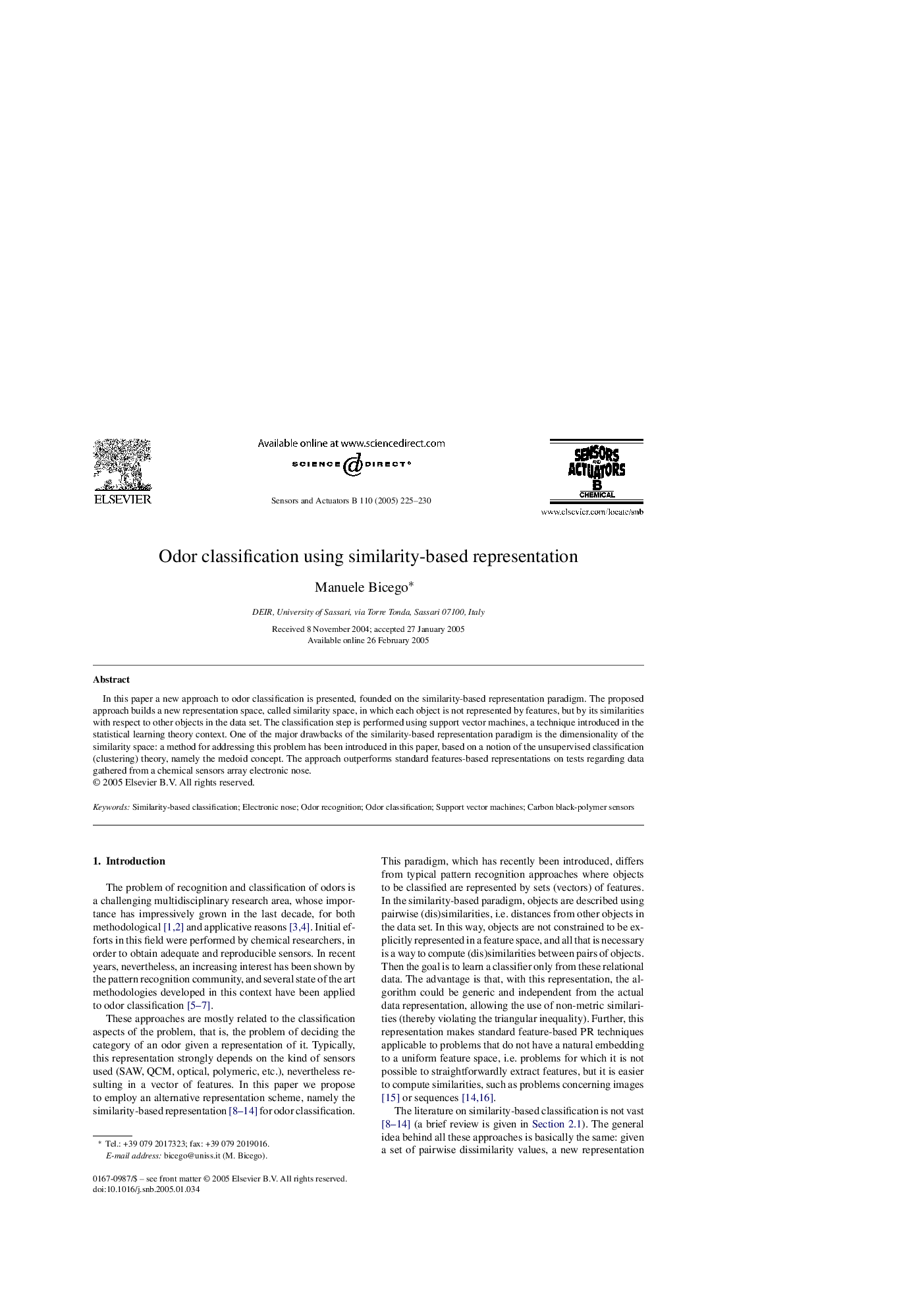| Article ID | Journal | Published Year | Pages | File Type |
|---|---|---|---|---|
| 9700874 | Sensors and Actuators B: Chemical | 2005 | 6 Pages |
Abstract
In this paper a new approach to odor classification is presented, founded on the similarity-based representation paradigm. The proposed approach builds a new representation space, called similarity space, in which each object is not represented by features, but by its similarities with respect to other objects in the data set. The classification step is performed using support vector machines, a technique introduced in the statistical learning theory context. One of the major drawbacks of the similarity-based representation paradigm is the dimensionality of the similarity space: a method for addressing this problem has been introduced in this paper, based on a notion of the unsupervised classification (clustering) theory, namely the medoid concept. The approach outperforms standard features-based representations on tests regarding data gathered from a chemical sensors array electronic nose.
Related Topics
Physical Sciences and Engineering
Chemistry
Analytical Chemistry
Authors
Manuele Bicego,
